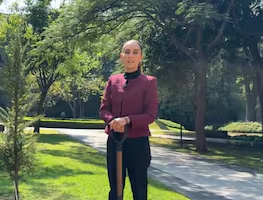Más Información

Sheinbaum publica en el DOF reforma en materia de prisión preventiva oficiosa; entra en vigor el 1 de enero de 2025

Sheinbaum cierra el 2024 con mensaje de Año Nuevo; recuerda legado de AMLO y reafirma continuidad de la 4T
Ana Paola Franco turned 21 recently, but she could not celebrate with her family because she is missing since February 9, 2016.
She lived at the Ajusco, where no security cameras are installed. Her family learned about her disappearance because the company she worked for called them after she did not return to work in the afternoon.
Between January and March, 2016, 187 reports of missing women were filed at Mexico City's Center for the Attention of Missing People (Capea).
José Antonio Ferrer, director of Capea, says that 6,057 disappearances have been investigated in the last three years. Six out of every 10 cases, i.e. 3,430, were women.
According to an analysis made by EL UNIVERSAL, 1,972 of the missing women are aged between 13 and 20 and 44% of the cases were registered at Iztapalapa, Gustavo A. Madero and Cuauhtémoc districts.
Between 2009 and 2011, 300 cases of missing women were not solved. In 2012, they reached 432 and in 2015, 522.
“There are sexual exploitation victims in Mexico City and the government is ignoring” this situation, said Gerardo Nava and Víctor Núñez, members of the NGO Observatorio Contra la Trata de Personas con Fines de Explotación Sexual.
And even though in 2015 a law was passed to create a register of missing people and victims of force disappearance for Mexico City administered by the local Attorney General's Office (PGJDF), the Department of Public Safety (SSP) and the Institute of Forensic Sciences, so far it has not been created.








